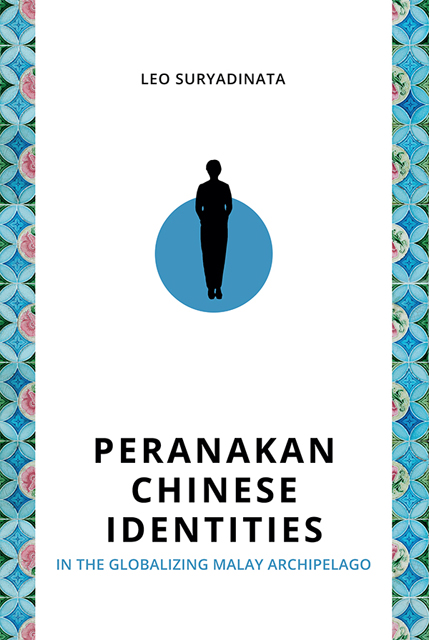Book contents
- Frontmatter
- Contents
- Preface
- Acknowledgements
- Part I Regional Dimensions: Indonesia, Malaysia and Singapore (IMS)
- Part II Focusing on Indonesia
- Appendix 1 The Prospects of the Peranakan Community at the Age of Globalization, by Tan Ta Sen
- Appendix 2 Some Books on the Peranakan Chinese Published between 2007 and 2021
- Bibliography
- Index
- About the Author
4 - Peranakan Chinese Identities in IMS (3): The Resurgence of Peranakan Associations and Peranakan Identities
Published online by Cambridge University Press: 01 September 2023
- Frontmatter
- Contents
- Preface
- Acknowledgements
- Part I Regional Dimensions: Indonesia, Malaysia and Singapore (IMS)
- Part II Focusing on Indonesia
- Appendix 1 The Prospects of the Peranakan Community at the Age of Globalization, by Tan Ta Sen
- Appendix 2 Some Books on the Peranakan Chinese Published between 2007 and 2021
- Bibliography
- Index
- About the Author
Summary
The Resurgence of Peranakan Associations
On 24–25 November 2018, I was invited to attend and give a keynote speech at the 31st Peranakan/Baba Nyonya Convention (abbreviated as the 31st Peranakan Convention) in Tangerang, West Java, Indonesia. I also had the opportunity to observe the interactions between the Peranakans from Malaysia, Singapore, Indonesia, Thailand and Australia. There were about 600 participants from these countries, of whom, more than 500 were from outside Indonesia.
To have smooth interactions with the Peranakan participants, English was made the medium of communication. Privately when the Peranakans from different countries communicate, they still use more English than Malay. This is because not all Peranakans are fluent in Indonesian or Malay, with the exception of Indonesian Peranakans who use Indonesian as their daily language. This point is important to remember in order to avoid an impression that the Peranakan Chinese are a homogeneous group. The so-called Peranakan Malay/Indonesian is not used either as this is a dying language and its vocabulary and structure are not sufficient to express complicated matters.
The Convention’s programme was rich. Aside from the keynote speech and two paper presentations on the Peranakan Chinese history and hybrid culture in Java, there were musical performances and a series of workshops on things Peranakan Chinese, ranging from food, cuisine, batik and games. In addition, there were visits to Peranakan historical sites in Tangerang, Central and East Java. This was some sort of a Peranakan cultural journey in Indonesia which lasted a few days, coinciding with the theme of the conference entitled “Exploring the Roots of Peranakan”.
The roots of the Peranakan are also quite controversial as both Indonesian Peranakan Chinese and Malaysian Peranakan Chinese thought that their Peranakan societies are the oldest, and hence they are the roots of the Peranakan. It is difficult to argue which Peranakan community is the oldest as more studies are needed. However, from the information available, it seems that the Indonesian Peranakan appeared to be older and much larger in number. During the (1405–33) expedition of Zheng He (Cheng Ho), Ma Huan discovered a number of Chinese clusters in Java (namely Gresik, New Village, Surabaya and Majapahit) and Sumatra (Palembang), and many of these Chinese were also Muslims.
- Type
- Chapter
- Information
- Publisher: ISEAS–Yusof Ishak InstituteFirst published in: 2023

